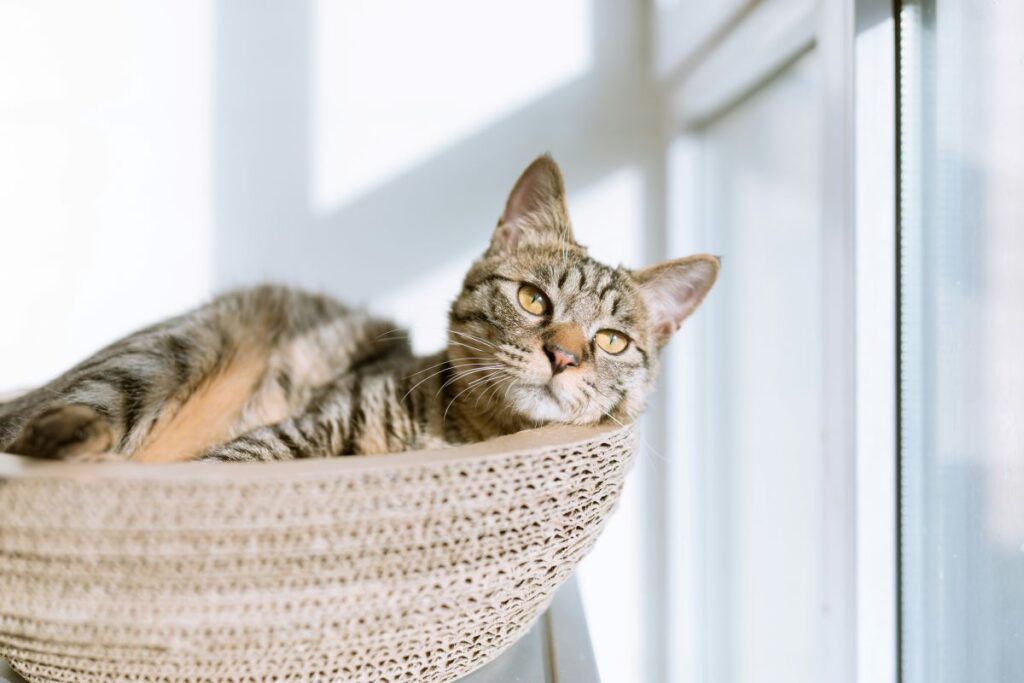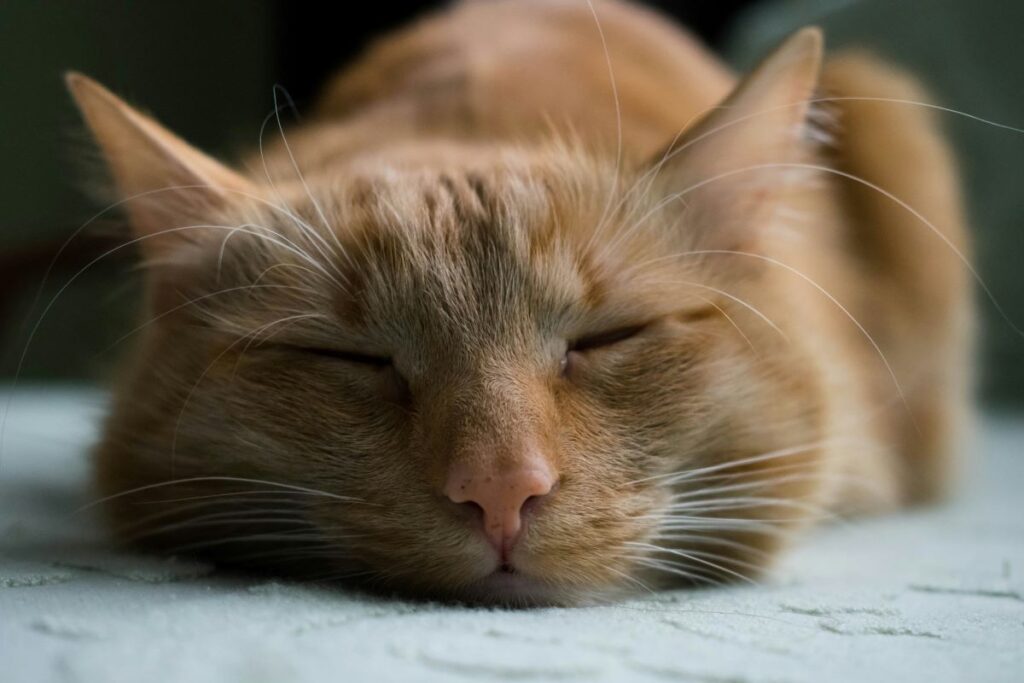Feline Lower Urinary Tract Disease (FLUTD) is a term used to describe a range of conditions affecting a cat’s bladder and urethra, including urinary infections, bladder stones, inflammation, and, perhaps most alarmingly, urinary blockages. While Feline Lower Urinary Tract Disease can be caused by various factors, the most serious and urgent form of this condition is urinary blockage, which requires immediate veterinary attention to prevent life-threatening consequences.

What is Feline Lower Urinary Tract Disease (FLUTD)?
Feline Lower Urinary Tract Disease includes any disease that affects the lower urinary tract of cats, such as the bladder, urethra, and kidneys. It’s important to note that FLUTD is not a single disease but rather a group of conditions that can show up in different ways. Some of the most common manifestations of Feline Lower Urinary Tract Disease include:
- Urinary Tract Infections (UTIs)
- Bladder stones (urolithiasis)
- Interstitial cystitis (inflammation of the bladder)
- Urinary blockages (obstructions in the urethra)
- Idiopathic cystitis (bladder inflammation with no obvious cause)
Among these, urinary blockages represent the most critical situation, especially in male cats, and can quickly escalate into a medical emergency.
Understanding Urinary Blockages in Cats
A urinary blockage occurs when something obstructs the flow of urine through the urethra. The most common cause of a blockage in cats is the formation of a plug, made of mucus, crystals, and sometimes small stones, that accumulates in the urethra, particularly in male cats due to their narrower urethra.
Why Is a Urinary Blockage So Dangerous?
A urinary blockage is a medical emergency because it prevents the cat from urinating. Urination is the body’s natural way of removing toxins and waste, and when urine accumulates in the bladder, it can lead to severe complications, including:
- Bladder rupture: The pressure on the bladder from the retained urine can cause it to rupture, which is life-threatening.
- Kidney failure: If the blockage is not relieved, it can lead to kidney damage or even failure due to the backup of urine.
- Electrolyte imbalances: The buildup of toxins and waste products can disrupt critical body functions, leading to cardiac arrhythmias or other organ dysfunctions.
Symptoms of a Urinary Blockage
Recognizing the symptoms of a urinary blockage early can save a cat’s life. Cats with urinary blockages will exhibit signs of discomfort and distress, including:
- Frequent trips to the litter box: The cat may attempt to urinate frequently but will produce little or no urine.
- Straining or crying in the litter box: This is often accompanied by vocalizations of pain.
- Licking the genital area: The cat may lick the area excessively due to irritation.
- Vomiting: The buildup of toxins can cause nausea and vomiting.
- Loss of appetite: The discomfort and pain associated with the blockage can cause a cat to refuse food.
- Lethargy: Cats may appear unusually tired or lethargic due to the pain and the inability to eliminate waste.
- Abdominal pain or bloating: The bladder becomes distended, and the cat may show signs of abdominal discomfort when touched.
- Collapse or unresponsiveness: If left untreated, the cat may eventually collapse, leading to severe toxicity and shock.
If you notice any of these symptoms, especially straining to urinate or absence of urination, seek veterinary help immediately. Time is of the essence in treating urinary blockages, as they can rapidly progress to life-threatening situations.
How Is FLUTD and Urinary Blockages Diagnosed?
To diagnose Feline Lower Urinary Tract Disease, including urinary blockages, a veterinarian will perform a combination of tests:
- Physical Examination: The vet will palpate the cat’s abdomen to check for signs of a distended bladder. They will also assess overall health and hydration status.
- Urinalysis: A sample of urine is collected to check for the presence of infection, crystals, blood, or other abnormal substances.
- Blood Tests: Blood work is performed to evaluate kidney function and detect signs of systemic illness or electrolyte imbalances.
- Imaging: X-rays or ultrasound may be used to visualize bladder stones, masses, or the presence of a blockage. This helps confirm the cause of the obstruction.
- Urethral Catheterization: In emergency cases, the veterinarian may attempt to relieve the blockage by inserting a catheter into the urethra to flush out the obstruction.

Common Causes of Urinary Blockages in Cats
Several factors can contribute to urinary blockages in cats, including:
- Bladder Stones: These can form due to an imbalance of minerals in the urine. Stones can block the urethra and cause pain, inflammation, and infection.
- Crystals: Calcium oxalate and struvite crystals can form in the urine, contributing to blockages.
- Inflammation: Inflammation of the bladder (due to infection or interstitial cystitis) can increase the likelihood of developing urinary plugs.
- Stress: Environmental stressors, such as changes in the cat’s routine or the introduction of new pets, are often linked to idiopathic cystitis (bladder inflammation) and increased risk of blockages.
- Genetics and Diet: Certain breeds are more prone to urinary issues, and a poor diet or inadequate water intake may contribute to the formation of crystals and stones in the urinary tract.
Treatment of Urinary Blockages and FLUTD
Once a blockage is confirmed, the treatment will depend on the severity of the condition and the underlying cause. For urinary blockages, the primary goal is to relieve the obstruction and stabilize the cat. Treatments include:
- Urethral Catheterization: In emergency situations, a catheter is inserted into the urethra to clear the blockage and allow urine to flow freely.
- IV Fluids: Cats may be given intravenous fluids to correct dehydration, restore electrolyte balance, and flush toxins from the body.
- Pain Management: Pain relief is essential to alleviate the discomfort caused by the blockage and the urethral catheter.
- Bladder Flushing: The bladder may be flushed with saline to remove any debris or crystals that may have contributed to the blockage.
- Surgical Intervention: In cases where a blockage cannot be cleared through catheterization, surgery may be required to remove stones or correct structural abnormalities.
- Long-Term Management: After the blockage is resolved, dietary changes (e.g., prescription diets designed to dissolve crystals or prevent stone formation), increased water intake, and sometimes medication for pain or inflammation are recommended to prevent recurrence.
- Cystotomy: If stones or large obstructions are causing frequent blockages, a surgical procedure called cystotomy may be necessary to remove them permanently.
Prevention and Ongoing Care
Preventing Feline Lower Urinary Tract Disease and urinary blockages in cats involves a combination of dietary management, stress reduction, and proactive monitoring. Here are some tips for preventing future episodes:
- Feed a high-quality diet: A balanced, moist diet can help reduce the risk of bladder stones and urinary crystals.
- Increase water intake: Encouraging your cat to drink more water (e.g., through a water fountain or adding wet food to their diet) can help flush out the urinary tract.
- Reduce stress: Minimize changes in your cat’s environment, provide plenty of mental and physical stimulation, and ensure a quiet, secure space for them to relax.
- Regular vet checkups: Regular veterinary visits can help detect early signs of urinary problems before they escalate into a serious condition.
Urinary blockages in cats are a serious and life-threatening condition that should never be ignored. Recognizing the signs of Feline Lower Urinary Tract Disease and acting quickly when symptoms arise is crucial for your cat’s health and well-being. Always consult your veterinarian if you suspect your cat may be suffering from urinary issues. With prompt treatment, many cats can recover fully, but urgent care is essential to ensure the best possible outcome.

